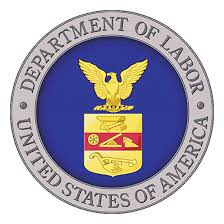By Kayla L. Robinson
On September 24, 2019, the U.S. Department of Labor (DOL) announced a final rule updating the salary thresholds necessary to exempt executive, administrative and professional employees from the Fair Labor Standards Act’s (FLSA) minimum wage and overtime pay requirements. Despite an unsuccessful attempt to do so in 2016, these thresholds have not been updated since 2004.
FLSA Background and Exemptions
The Fair Labor Standards Act of 1938 establishes standards for minimum wages, overtime pay, recordkeeping, and child labor. Employers subject to the FLSA must engage in interstate commerce and have at least $500,000 in “annual dollar volume of sales or business.”
The FLSA requires employers to pay their employees a minimum wage which is currently $7.25 per hour. Employees covered under the FLSA who work in excess of 40 hours a week are also entitled to overtime pay. Overtime must be paid time and one-half of an employees’ regular rate of pay for those hours worked above 40 per week.
Several exceptions to the overtime requirements exist, the most common being exemptions for executive, administrative, and professional employees, more commonly referred to as the “white collar” exemptions. To qualify for the white collar exemptions, employees must meet a salary level threshold and a duties test. The baseline salary threshold and duties tests are established by the DOL (specific states may have different exemption rules, including higher salary thresholds or more specific duty requirements). The duty requirements are specific to each exemption. To qualify for the executive exemption, the employee’s primary duties must include managing the enterprise, directing the work of two or more employees, exercising discretion, and having the authority to hire or fire employees. To qualify for the administrative exemption, the employee must perform office or non-manual work and exercise discretion and independent judgment. Finally, to qualify for the professional exemption, the nature of the employee’s work must require advanced knowledge that was acquired through a prolonged course of specialized study.
Additionally, employees who are considered “highly compensated” are not eligible for overtime. Similar to the white-collar exemption, to qualify as a “highly compensated” employee, the employee must meet a salary threshold and a duties test. The salary threshold is set by the DOL and the employee must have primary duties that include performing office or non-manual work and customarily and regularly perform at least one of the exempt duties of an exempt white-collar worker.
2016 DOL Overtime Rule
Before DOL announced its updated overtime rule in September, its most recent overtime rule was issued in 2004. The principle provision of the 2004 overtime rule increased the salary threshold for white collar employees to $455 per week or $21,480 per year. The DOL attempted to increase the salary threshold for the white-collar exemption from $455 to $913 per week or $47,476 per year in a final rule that would have been effective December 1, 2016. The 2016 rule would have also increased the salary threshold for highly compensated employees from $100,000 to $134,004 per year and provided for automatic increases to the salary levels every three years. However, 21 states challenged the rule in Texas federal court. A Texas federal district court enjoined the rule in 2016, finding that DOL’s rule created a de-facto salary-only test, which is contrary to the FLSA’s duties test to qualify under the white-collar exemption. The court also found that DOL did not have the authority to implement automatic updates to the salary thresholds. The district court’s ruling was appealed at the beginning of the Trump administration, but the DOL is currently enforcing only the $455 per week threshold. The DOL’s issuance of the 2019 rule indicates that the appeals case will likely be dismissed for mootness.
2019 DOL Overtime Rule – What Employers Need to Know
DOL’s new overtime rule, issued on September 24, 2019, makes three significant changes to prior DOL overtime regulations. First, the minimum salary level increases from $455 per week to $684 per week, or $35,568 per year. This minimum salary level increase does not apply to Puerto Rico, the U.S. Virgin Islands, Guam, the Commonwealth of the Northern Mariana Islands, and American Samoa. The $455 per week salary level will continue to apply in those locations with the exception of American Samoa, where a $380 per week threshold will apply. Additionally, DOL set a weekly base rate of $1,043 per week for the motion picture producing industry. Therefore, employers who want to claim the “white collar” exemption under FLSA should review the salaries of their employees to ensure that their salaries meet the new minimum salary levels.
The second change is that the highly compensated employee salary level increases from $100,000 to $107,432 per year. Again, it is important here for employers who rely on the highly compensated employee exemption to review their compensation structures to ensure that those employees’ salaries meet the new level. There is also no mention in the rule of automatic increases to the salary thresholds, which can give employers some reassurance that the minimum salary and highly compensated salary thresholds will only be increased through the rulemaking process. By DOL going through the rulemaking process, employers will be able to provide comments on future proposed threshold increases, which they would not be able to do if the increases were automatic.
The final change, and coincidentally the only provision that survived from the 2016 rule, allows employers to use nondiscretionary bonuses and incentive payments, including commissions, that are paid at least annually to satisfy up to 10 percent of the salary thresholds. Under this provision of the new rule, employers can reduce salary increases for exempt employees by implementing annual bonuses or incentive payments that cover the difference between the new minimum salary threshold and the employee’s salary, up to 10 percent. This is also referred to as the “10 percent rule.” If, at the end of the year, employers using the 10 percent rule have not met the minimum salary threshold, DOL permits employers to make a final “catch-up” payment within one pay period after the end of the year in order to bring the compensation up to the required level.
Next Steps
DOL’s new overtime rule takes effect on January 1, 2020. With less than six months until the effective date, employers should discuss compliance strategy with counsel. Employers who are considering utilizing the 10 percent rule should also coordinate with their human resources and payroll offices to ensure that there are policies and monitoring in place to ensure that the minimum salary thresholds are met for their exempt employees. Furthermore, when having these compliance discussions, it is important to keep in mind that DOL’s new overtime rule only changes federal overtime requirements. States and municipalities can issue their own overtime rules that go beyond the federal requirements. Therefore, in addition to developing a compliance strategy for the new DOL overtime rule, employers should monitor state and local laws for changes.

Martenson, Hasbrouck & Simon LLP
krobinson@martensonlaw.com
www.martensonlaw.com
